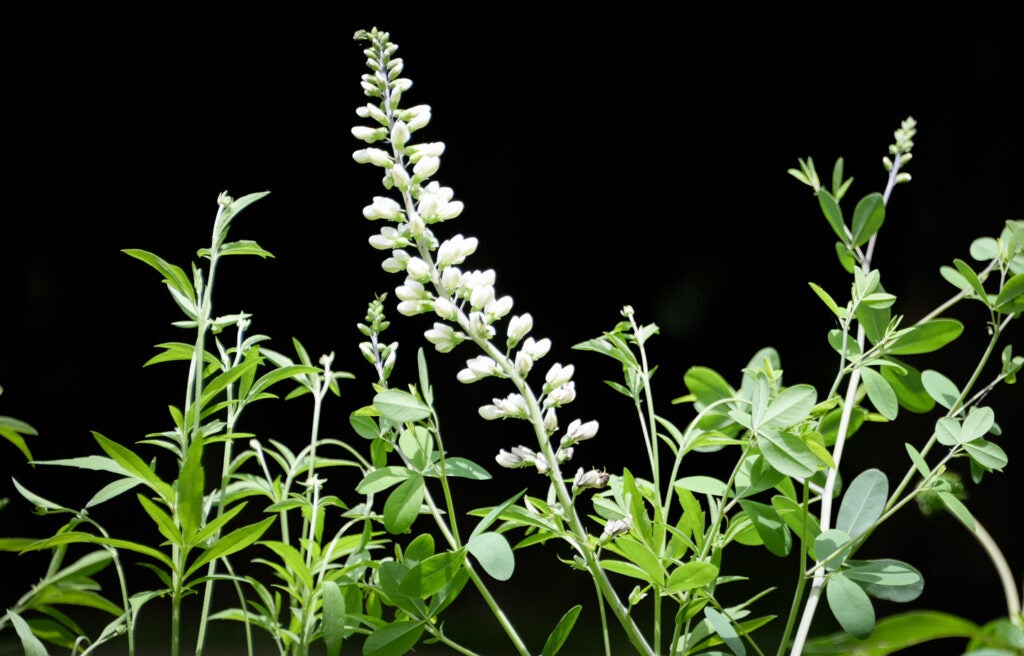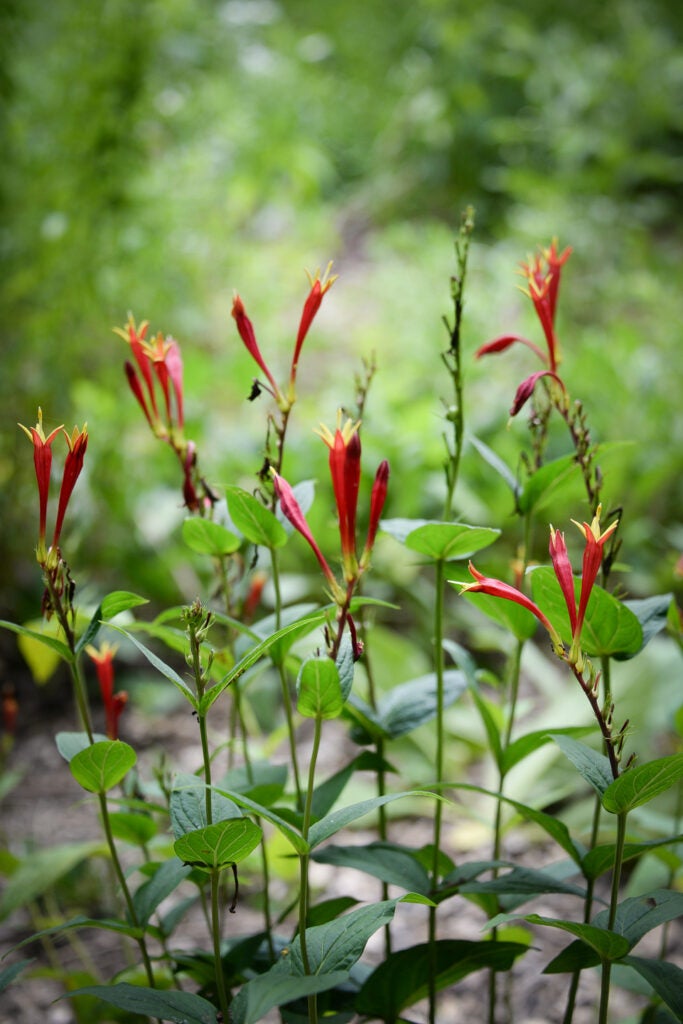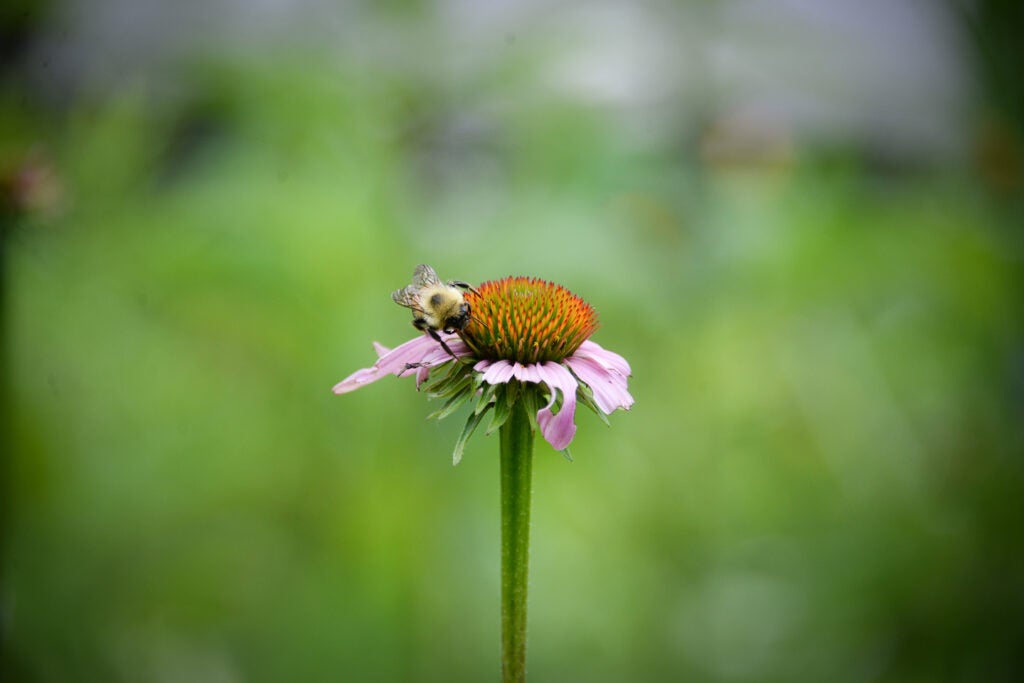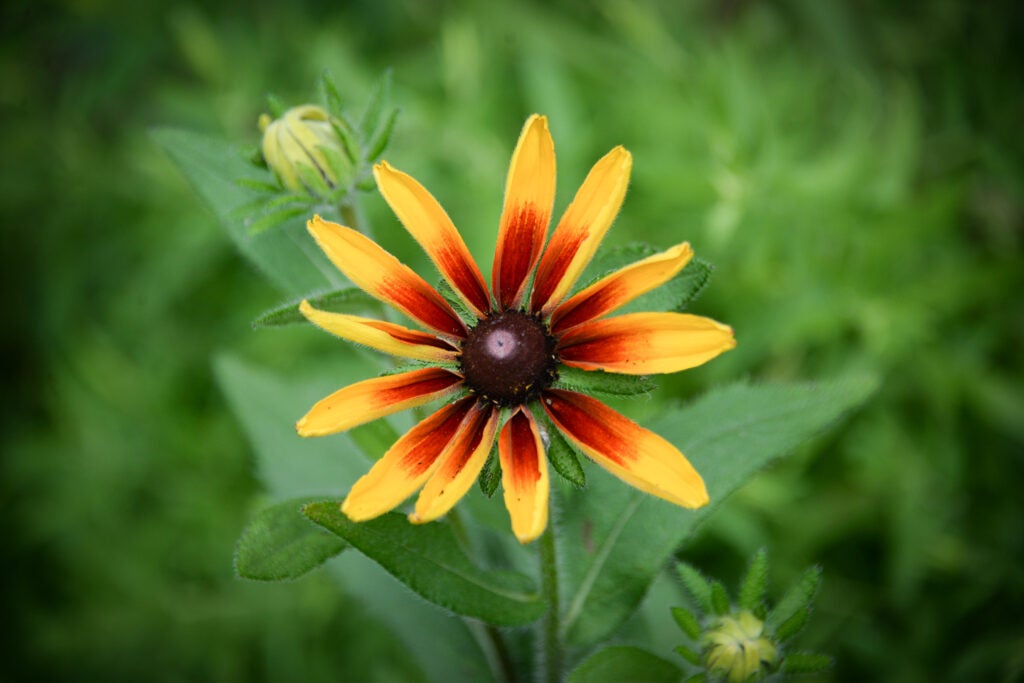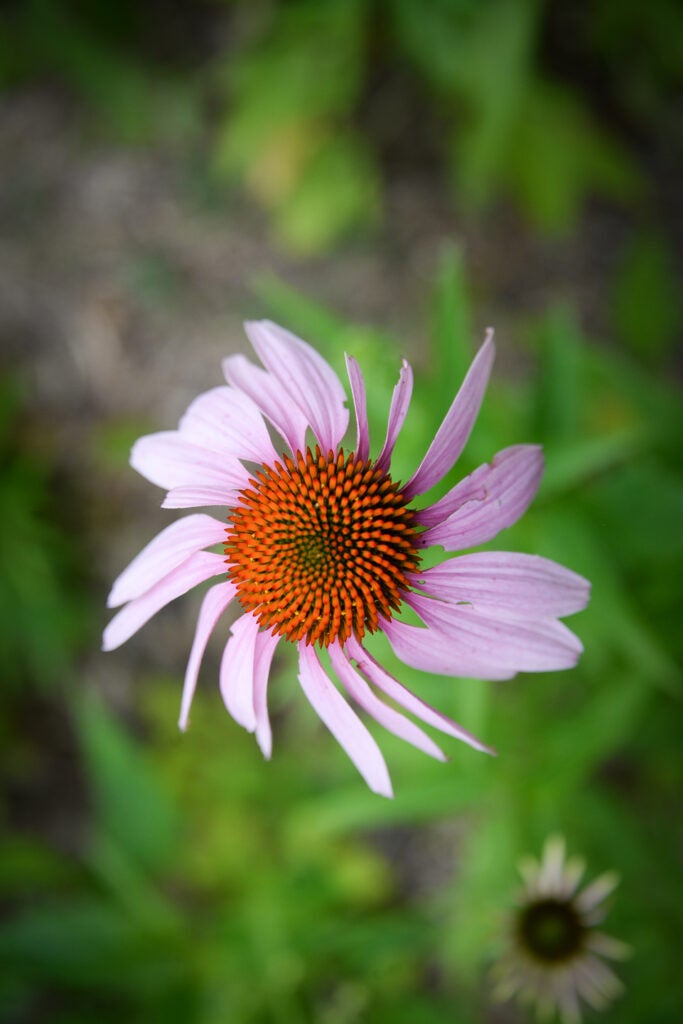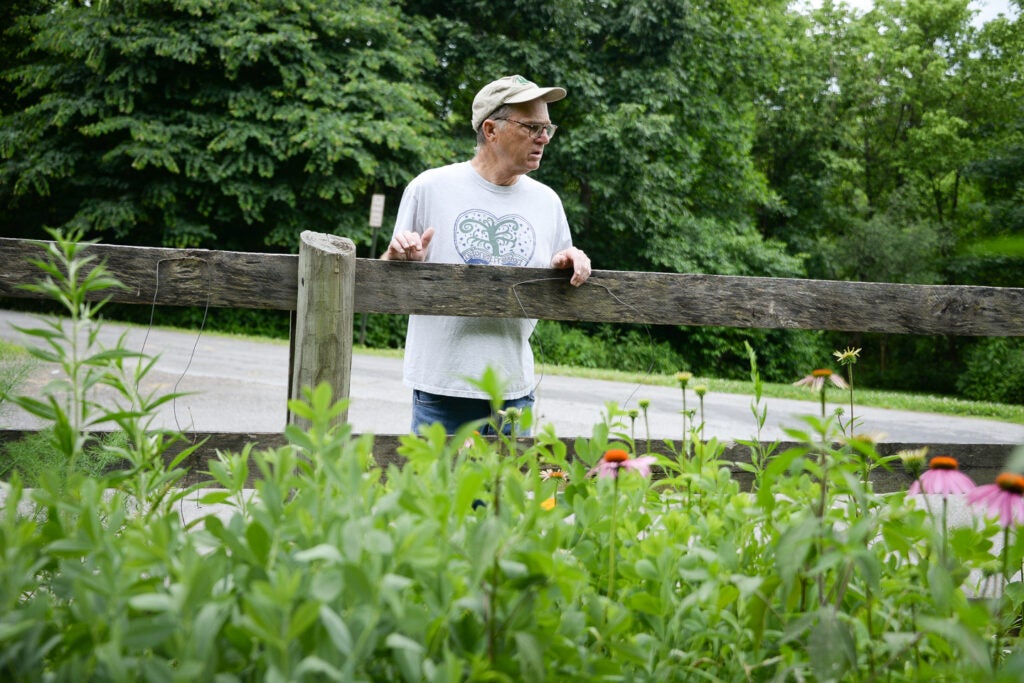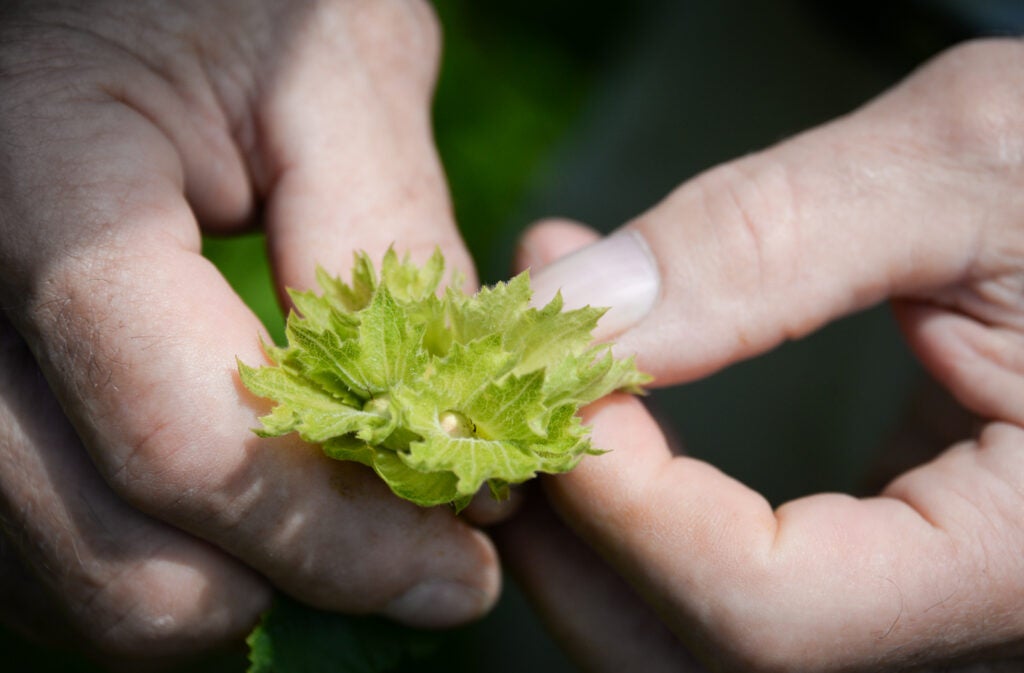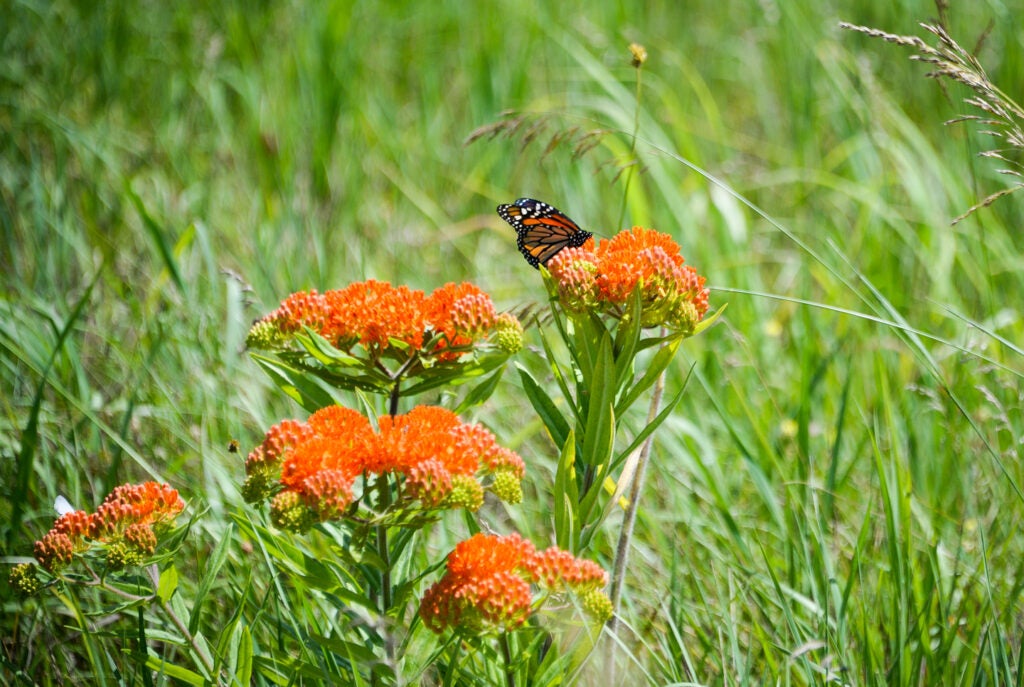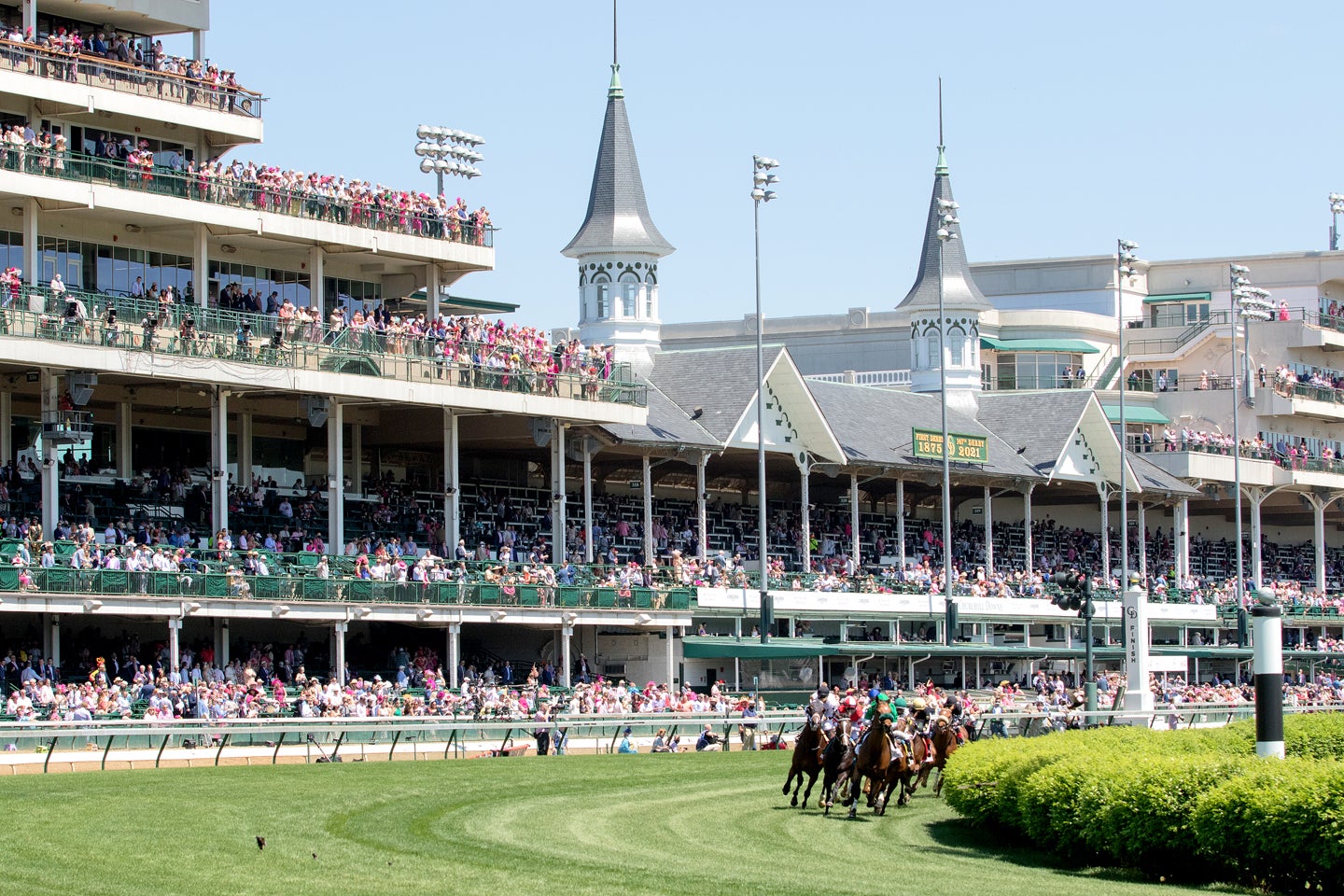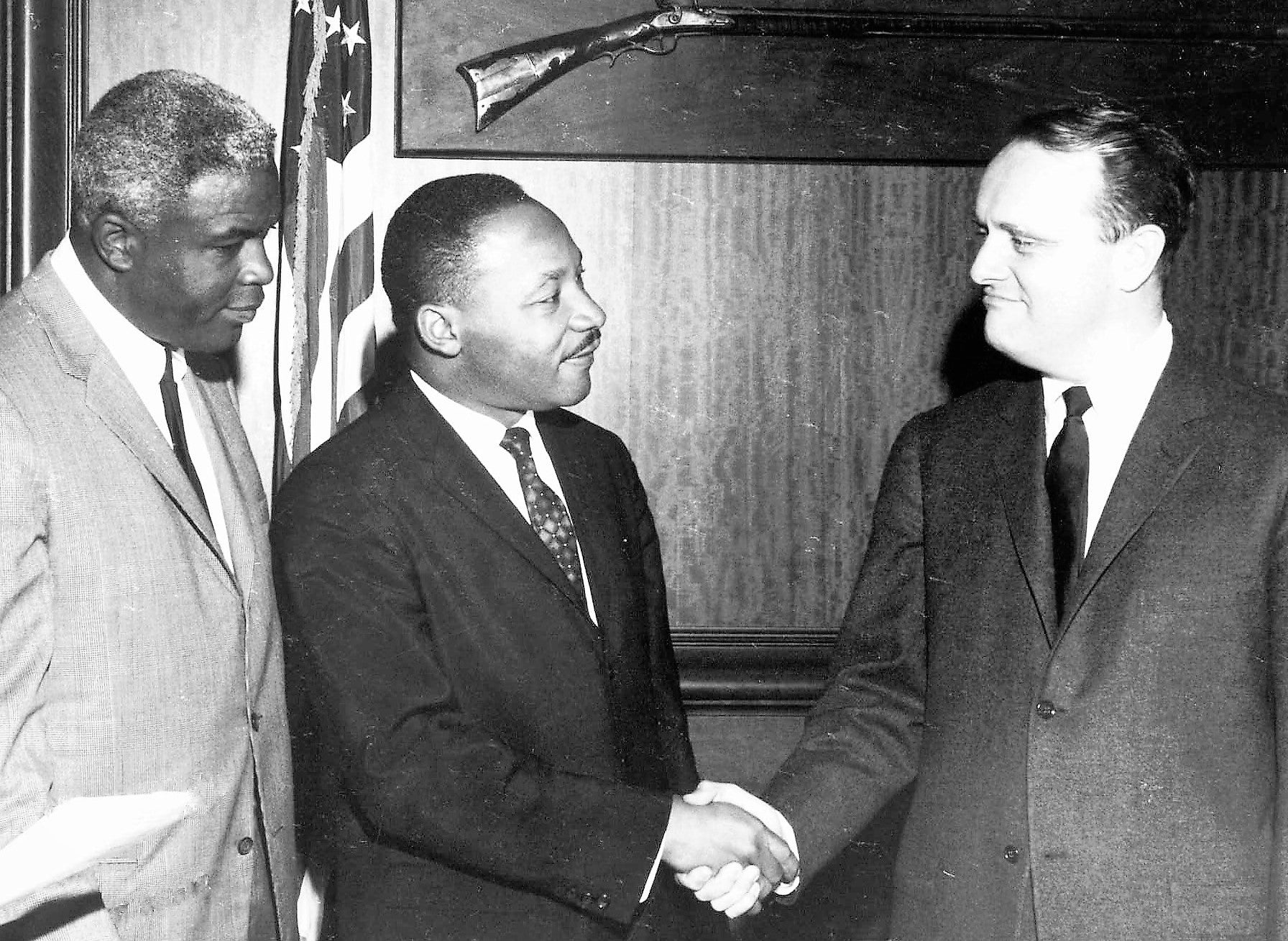By Brian Baker
Though I am not a botanist — but rather a hydrogeologist — I will nevertheless attempt to present an overview of the “’botanical” (i.e., relating to plants) activities at Cove Spring City Park and Nature Preserve (Cove).
Cove is a rather unique geologic area in Frankfort, Kentucky, consisting of approximately 240 acres. As with all of Central Kentucky, Cove is limestone country. Cove’s location at the lower edge of a rather large elevated sinkhole plain where it dramatically cuts down to the Kentucky River gorge, results in a rugged landscape with numerous springs.

The main natural feature of Cove is the Spring Spur Gorge and the associated Lower Meadow. Halfway back, the Spring Spur Gorge is the ever-flowing Cove Spring emerging from its stone spring house at a temperature of 55 degrees. This is one of the largest springs in the Central Kentucky Bluegrass Region with a recharge basin extending out (through the sinkhole plain) at least four miles. During and after a heavy rain there are numerous large springs throughout the gorge and Lower Meadow. Many of these only flow for a few hours or a few days.
From the top of the ridges to the floor of the meadow, there is more than a 230-foot change in elevation. Much of this area has very steep wooded cliffs. From 1805 to 1986, much of the Lower Meadow was a man-made lake that provided water to Frankfort until 1884. The dam was breached in 1986 and the lake was completely drained. Most of the dam and all of the overflow tower — which controlled the level of the lake — still remain. This former lake and the rugged terrain proved to be effective barriers to farming and development. As a result, an island of biodiversity was left as the surrounding areas became developed.
This remnant gives us a glimpse of what some areas of Central Kentucky may have looked as Daniel Boone first saw it. One particular survivor or remnant plant is Braun’s rockcress — named after the pioneering botanist and ecologist Emma Lucy Braun (1889-1971). It could be said that it was primarily due to this one federally listed endangered plant that the original 100 acres of Cove was purchased with a grant from the Kentucky Heritage Land Conservation Fund.
The fund is generated by the sale of nature license plates and is managed by Kentucky Nature Preserves. The fund was designed primarily to purchase and protect ecological environments in Kentucky that have rare plants and/or animals, as well as other lands deemed worthy of conservation.
This first tract of land was purchased in 2001 and Cove opened to the public in 2002. Additional tracts of land including Blackberry Meadow, were purchased in 2011 with Heritage Land Conservation funds. The Sky Trail area was purchased by the city. Much of the work building and improving the trail system at Cove has been facilitated by a variety of other grants.
In 2012, we began the process of obtaining a Federal Recreational Trails Program grant through the Kentucky Transportation Cabinet in association with the United States Fish and Wildlife Service. This ultimately resulted in a matching grant of $33,000 (grant) and $33,820 (city), a total of $66,820.
This money allowed for the removal of dumped debris at Blackberry Meadow and the planting of numerous native trees, shrubs and wildflowers. The money also went toward creating a new pond in the Wetland, as well as elevating the Creekside Trail, installing two large culverts and a bridge to make the trail much more usable.
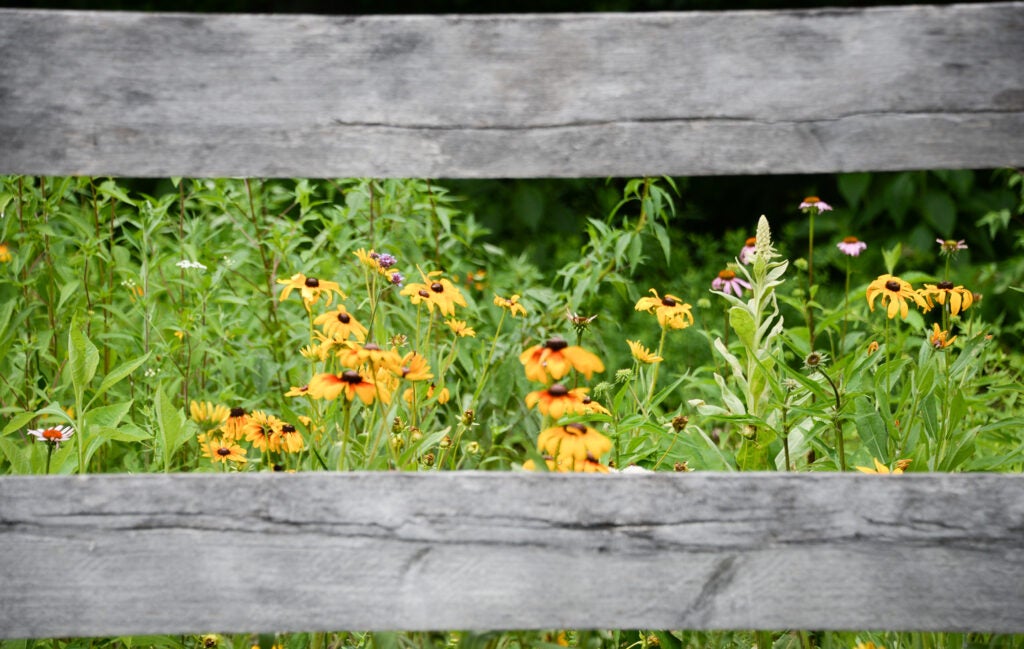
From a botanical perspective, there are two related main goals at Cove, one, the protection and enhancement of native plants; and two, the removal of non-native invasive plants. Native plants are those that were in the area prior to European settlement in 1773. It has been shown — at Cove and elsewhere — that the re-establishment of native plants will almost immediately result In the return of native insects and native wildlife — if they are still in the region.
There are two of us — myself and Andrew Cammack — who are tasked with the challenge of enhancing native plants and removing non-native plants. Cammack has been continuously pursuing these objectives since he drafted the grant to get Cove established in 2001 and I have been at it since 2007.
The primary task, which will almost certainly be never-ending, is the removal of bush honeysuckle. The plant was introduced as an ornamental into America from Asia in 1896. The plant has done more — from my perspective — to destroy the native ecosystems of Kentuckiana than any other plant, though it is not a significant problem where there are acidic soils, such as Eastern Kentucky.
Not only does bush honeysuckle grow rapidly in both sun and shade, it also produces many berries, which are dispersed by birds. This plant is generally considered to be allelopathic in that it produces toxic compounds that stunt or kill essentially every other plant. Other non-natives at Cove also appear to be allelopathic but none seem to be as effective as bush honeysuckle.
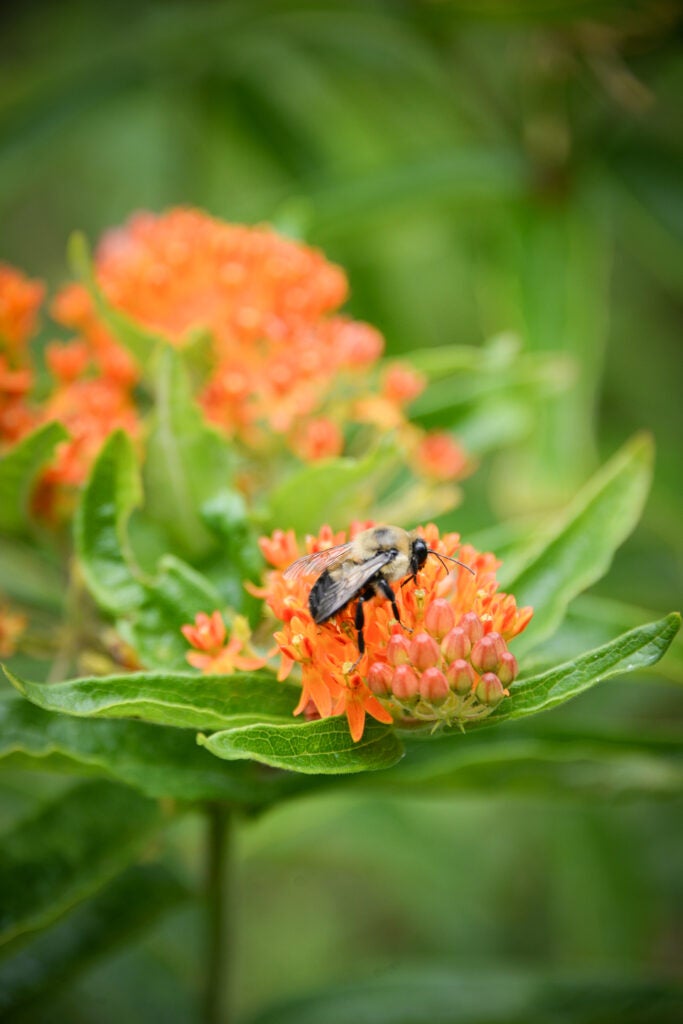
Second оn my worst plant list is privet. Based on my own experience over many years, I consider privet to be about 50 times more difficult to eradicate per equal area than bush honeysuckle, due to its numerous small stems and sprawling roots. Other problematic non-native plants (listed in order of the amount of time we spend eradicating the plant) at Cove are winter creeper, garlic mustard, autumn olive, Japanese honeysuckle, Kentucky-31 fescue, crown vetch, multiflora rose, hairy vetch, tree-of-heaven, burning bush, Japanese knotweed, yellow sweet clover, white sweet clover, poison hemlock, Japanese stilt grass, sericea lespedeza, common hedge parsley, Bradford pear and teasel.
Air potato vine was discovered at Cove two years ago, and though it appears to be in just one area, it has so far been all but impossible to eradicate. Much like the notorious kudzu, it grows and spreads rapidly. If not eradicated, this plant could become as devastating to Cove as kudzu has been to many areas of the South.
Though probably done with good intentions, based on the knowledge at the time, many of these invasives were introduced — or promoted — through government programs, which were trying to promote quick fixes to erosion concerns or quick fixes for establishing ground cover on damaged or stressed lands such as strip mines and road cuts. While no one can ever count the true costs of these policies, it has almost certainly “cost” Kentucky billions of dollars in herbicide applications and lost productivity of farm and forest lands. These ongoing expenses are unlikely to never end, but are more likely to increase.
While the task of totally eradicating all of the non-natives at Cove is essentially impossible, Andrew and I continue to strive, with limited resources, to do the best we can and find that we must be content with small victories. We generally take on an “island” and/or “brush fire” approach wherein we focus on one or two specific areas at certain times of the year. Special priority is given to beating back the invasives along the seven or so miles of trails. Without this ongoing effort, most of the trails would become impassible in a year or so and would all but disappear in a few years.
Attention is also given to the numerous prairie gardens throughout Cove. These are all native wildflower gardens that have been created by the two of us since 2011 — in open meadows where they can get full sun. These are also known as the summer gardens, the pollinator gardens and the monarch waystations.
The three largest are all within the Sky Trail Loop. There are also gardens in the Lower Meadow, at the main entrance and at Blackberry Meadow. It is a constant battle to remove the sun-loving invasives from these gardens. Some of the more problematic plants include crown vetch, hairy vetch, Johnson grass, Kentucky-31-Fescue, common hedge parsley, Japanese honeysuckle and teasel, just to name a few.
Blackberry and to a lesser degree raspberry can also be difficult plants to control. Beyond the maintained gardens, we generally just let these plants grow.
Unfortunately, the only practical way to kill large numbers of woody non-natives, such as bush honeysuckle, privet and multiflora rose at Cove (especially in the more rugged areas), is to cut the plants down to the ground and immediately spray the stumps with a concentrated herbicide. In select areas — at select times — we may also spray certain invasives with a diluted solution of herbicide. Generally, this is done in February or early March. Two common invasives that we treat in this manner are garlic mustard and poison hemlock. Surprisingly, we have found that poison hemlock can be effectively controlled. As for garlic mustard, it seems as soon as we kill or pull the larger plants, there are thousands of seeds under them that almost immediately sprout — and so it never ends. In most cases where it is practical, we prefer to pull such plants instead of applying herbicides.
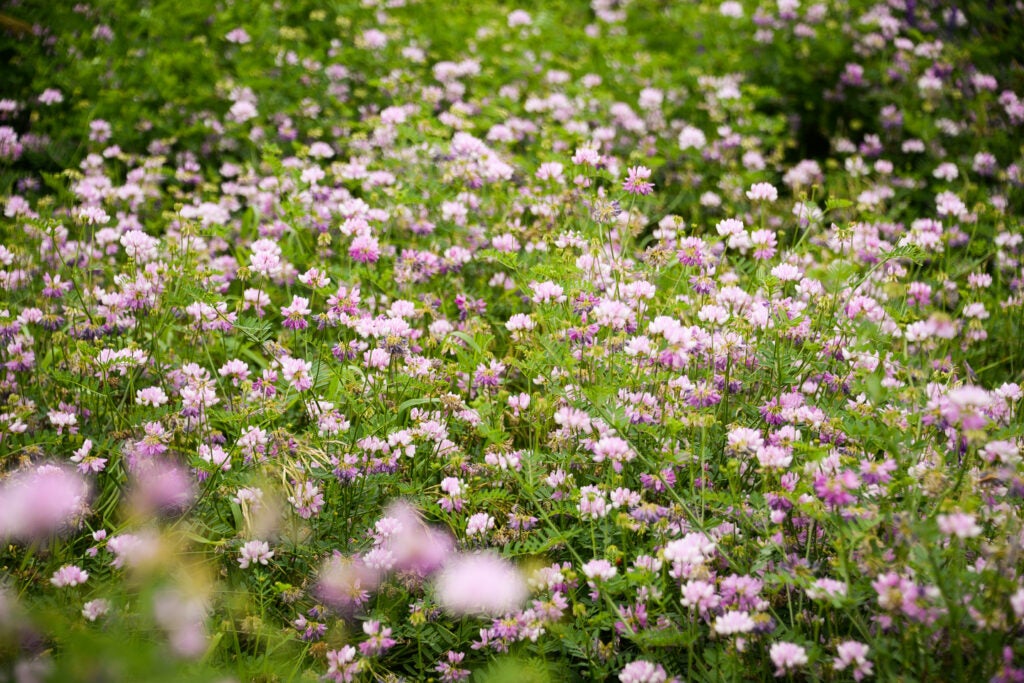
Initially, we had somewhat of a problem with Bradford pear — also known as Callery pear. This is almost certainly the worst non-native tree in the region. This problematic tree was introduced from China in 1909. We have killed all the known large trees — but hundreds of smaller trees keep popping up every year. If these young trees were ignored, they could become a significant problem in less than five years by crowding out the non-natives.
Even though we have eradicated large areas of autumn olive, this non-native tree is still abundant along the more remote parts of the Osage Trail — where it continues to encroach.
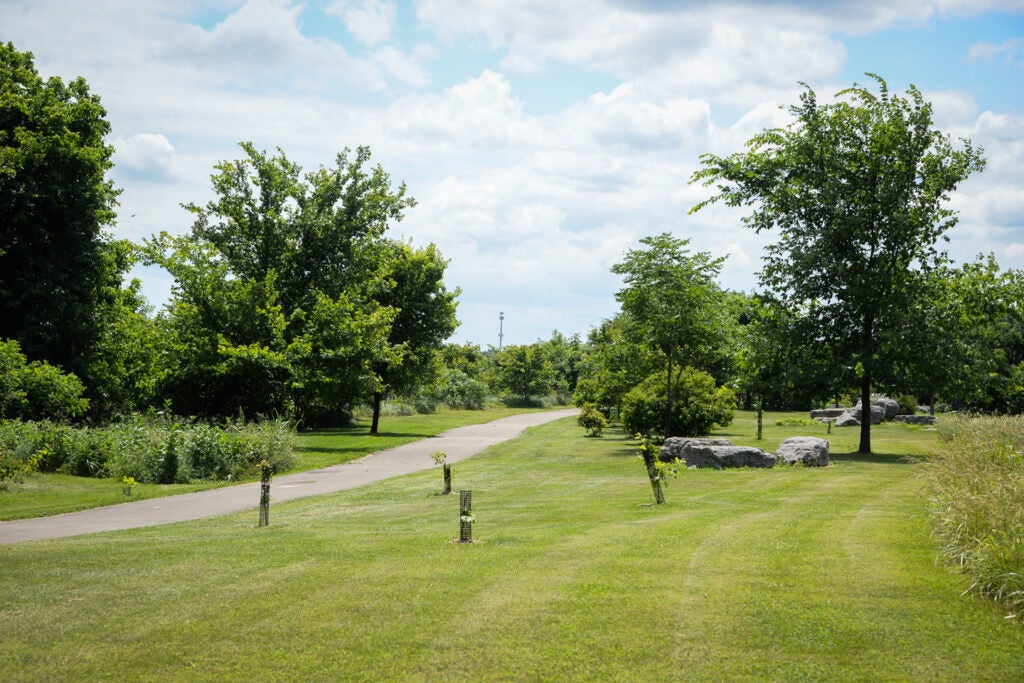
There have been three Reforest Frankfort Arbor Day events at Cove. Several thousand native trees and shrubs have been planted but they must contend with a combination of poor soil, drought, rabbit browse and deer browse. Another problem has been that in some areas, the non-natives such as Johnson grass, vetch, Japanese honeysuckle and teasel, compete with the young trees. In general, we simply do not have the resources to adequately address all of the various threats. The oaks especially struggle, while the sycamores, rough-leaved dogwoods and redbuds are some of the few that seem to be able to more easily thrive. The over population of deer continues to have significant adverse impacts on the native plants of Cove — as they do elsewhere.
In recent years, with cooperation with Kentucky Nature Preserves, we have had great success in expanding populations of endangered plants and introducing a newly discovered plant. Over the years, a dozen or so friends and colleagues have continued to help us remove non-natives. Every year we try to have a volunteer day in the spring to pull garlic mustard and winter creeper. We have also received significant help from Franklin County Regional Jail and there have been various Eagle Scout projects over the years.
Over the last few years, we have been working on removing bush honeysuckle, privet and multiflora rose in areas back beyond the Sky Trail, especially along the Osage Trail, in the Maze and in a new area called Laurel Glade. One of the rewards of this work has been the discovery of somewhat rare plants that seem to have laid dormant for decades under the canopy of bush honeysuckle. These include false aloe, downy skullcap, wild pink and glade calamint.
For years now, I have been trying to learn all I can about the plants at Cove. I have scoured numerous field guides and made just about every kind of list imaginable: plants native to Central Kentucky, plants native to Kentucky, plants we have introduced, plants I have yet to identify, etc. Altogether, the total number of plants on my lists must exceed 400 perhaps 500. I once thought I would eventually identify at least 1,000 plants at Cove but I was told on good authority that this was not possible. I have read that there are 3,000 plants in Kentucky and that 2,000 of these are native. I have not been able to find an easy to read guide book on the native and non-native plants of Central Kentucky. One of my objectives is to have at least one of each native plant that probably existed at Cove prior to settlement.
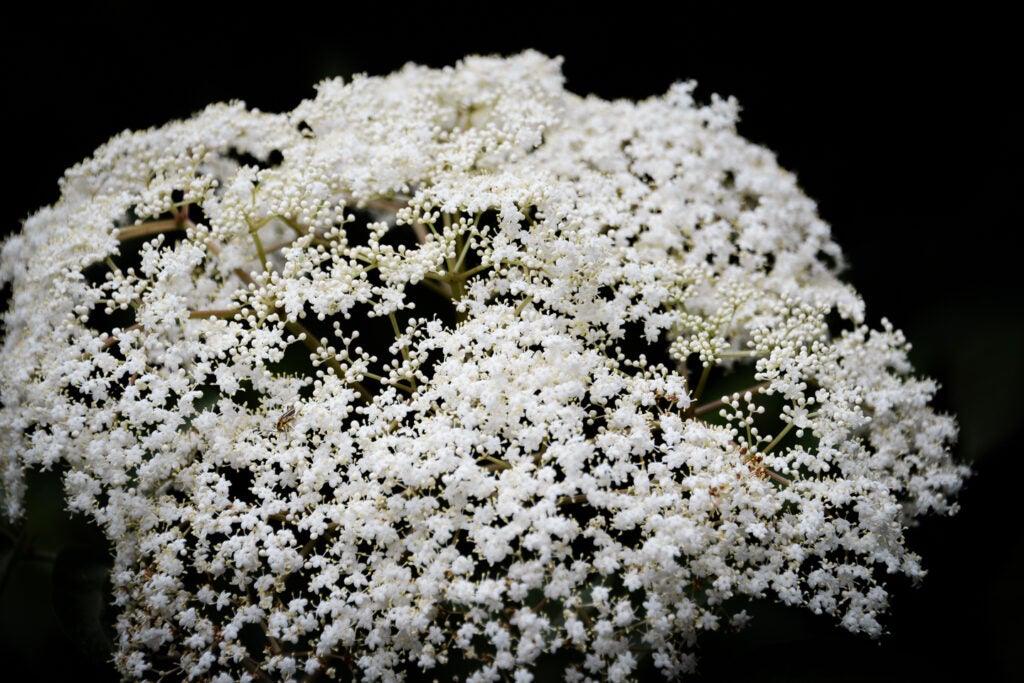
While it was rather easy to identify some of the worst non-native plants at Cove, it is much more subjective to identify my favorite native plants, but here are some:
- 10,000-plus early buttercups at Laurel Glade in mid-March to early April: When the sun is out, they open to create a bright yellow carpet ‚ one of the most beautiful displays at Cove.
- Twin leaf, bloodroot, hepatica and other ephemerals for being the first bright lights of the year, in the deep wood of the gorges.
- Spiked blazing star: Though a western Kentucky plant — because it is the best at attracting butterflies with their towers of purple flowers.
- Butterfly weed and common milkweed because of their value in supporting monarch butterflies.
- Rattlesnake master: Another western plant — because it is the best at attracting native bees and wasps.
- Compass plant and prairie dock: Though again western — for their large tropical-looking leaves and their cluster of flowers on 10-foot stalks
- The coneflowers, such as orange scented, gray-headed and purple, for their long-tasting blooms in summer. However, in recent years, the first two varieties have become too dominate.
- The sunflowers for their wide variety and long-lasting blooms.
Though this presentation has focused on the work done by myself and Andrew Cammack, it should be noted that there are currently five other staff at Cove who do the demanding work of mowing, trimming, upkeep of the infrastructure, etc., as well as keeping the picnic areas and other heavily used areas always well maintained. We are all part time or summer employees.
I have long considered Cove to be the jewel of Frankfort for its spring-fed creeks, rich history, unique geology, dramatic scenery and biodiversity. I hope that in the years to come it continues to be given the care and attention it deserves.
Brian Baker is a Frankfort Parks, Recreation and Historic Sites staff member. He can be reached at brian.baker012@gmail.com.
